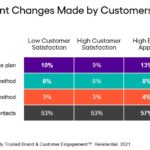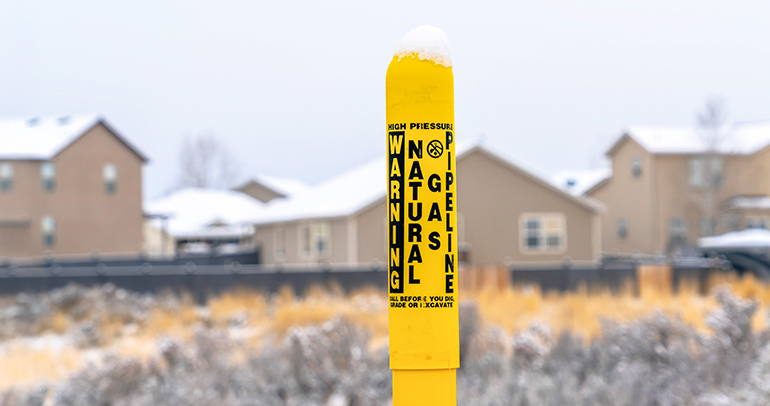
“Where is the wisdom we have lost in knowledge? Where is the knowledge we have lost in information?”—T. S. Eliot
During the pandemonium of 2020, customers’ satisfaction with utility services hit an all-time high worthy of high fives (or high elbows) because of utilities’ great success in improving their core service functions. The scores from our Cogent Syndicated Utility Trusted Brand & Customer Engagement™: Residential study illustrate this increased satisfaction.

Now What?
With the basic needs tier of Maslow’s hierarchy met for developing deep customer relationships, next-level utilities are focusing on building their brands, positioning themselves as best-in-class product providers dedicated not only to offering affordable energy but also to local communities and global issues. In fact, premier utilities don’t necessarily have the best service levels (according to customer feedback) but are the easiest to do business with, environmental champions, and overall trusted brands. Creating these perceptions among their customers allows top-ranked utilities to monetize their brands through greater engagement with enhanced service options, energy-efficiency offerings, and new energy products.
A strong brand is more than numbers—it is something customers feel and have an affinity toward. It is often more highly valued than the product itself. Therefore, strong brands are able to engage customers in deeper and more meaningful relationships.
Engaging Customers and Influencing Behavior
High customer satisfaction with service is great but research shows that innovative utilities can’t monetize satisfaction, as it doesn’t cause customers to change behaviors. Customers who are happy with the way things are don’t have a reason to embrace change. Behavioral influence starts with a brand that appeals to its customers and is positioned as a trusted adviser.

This influence is based upon a change that occurs when customers see utilities as great brands instead of monopolies—customers want to do business with their utility instead of having to do business with it.
Regulators are moving past simple customer satisfaction as a meaningful measure as they set their sights on the need for utilities to engage customers in renewable resources, energy-efficiency offerings and community outreach. Research also shows that CSAT has little influence on regulator rate decisions. Instead, regulators have become more in tune with customer needs, as over half (54%) of the reasons customers would support a rate increase is to build brand characteristics (outreach, communication, environment) and expand energy-efficiency offerings.
In addition, stakeholder influence is tied to strong brand trust, as Wall Street has told the industry that stock premiums will be muted unless ESG goals are established and met. This means new customer directives need to be developed in 2021 that lead utilities to build and monetize their brands so customers trust and use new ESG-friendly offerings.
5 Utility Brand-Building Guideposts
- Build a brand with a purpose. For utilities, the most attractive brand traits are beyond service routines. Recognize that 54% of customers want a utility brand to stand for financial value, 43% want the brand to be customer-focused, 36% want environmental and social citizenship, and 22% want the brand future-focused. Find out what your customers want most and build a message that relates to it. OUC scores the highest on brand appeal.
- Evolve from service experience to customer engagement. Service experiences, brand experiences and product experiences each account for about one-third of customer engagement. So, building well-balanced relationships with customers is important. Measuring and tracking utility progress on customer engagement should provide a quantitative evaluation of all customers’ experiences.
- Focus on building a trusted brand. Utility brands built on trust establish greater customer loyalty. For instance, customers who give high Brand Trust index scores have a loyalty rating of 8.50, 2.11 rating points higher than the overall industry average. Also, customers who trust their utility tend to read and value utility communication and give their utility the benefit of the doubt during critical events as well as value its recommendations. Indianapolis Power & Light has the most customers saying the utility is a trusted energy provider.
- Make recommendations at every touchpoint. Currently, only 42% of customers calling for service receive a product, program or other recommendation to help them. This is relinquishing the advisory position utilities have built with their customers. Recommendations should be provided with confidence, as 80% of customers say they have acted on their utility’s recommendations. TECO Peoples Gas is the industry leader on providing customer recommendations.
- Shorten the time between offering awareness and usage. The payoff to establishing a trusted advisory position is the ability to influence customers to use the enhanced offerings, options and products your utility provides. By communicating your offerings and making recommendations on touchpoints, you can convert customers who are aware of offerings to ones who use them. But multiple recommendations and communication take time and expense. For example, the average utility customer has 7% interest and awareness of utility online tools to help manage energy consumption. This increases to 9% (about a 30% lift) when customers give high scores on the ECR (engaged customer relationship) metric. Rochester Gas & Electric is the leader in customers using enhanced offerings.
With the industry evolving in the new energy marketplace, utilities are expected to be more than power and gas providers: they are going to be challenged to retain their position as energy leaders and customer champions with new offerings and directions. Crafting a strong, meaningful and trusted brand is central to do in building this new future.
Twice a year we publish our Utility Trusted Brand & Customer Engagement™: Residential report which benchmarks the nation’s top 140 electric, natural gas and combination utilities to identify opportunities and trends in the industry. Click below to learn more about the full report and how we can help your utility successfully build it’s brand.









